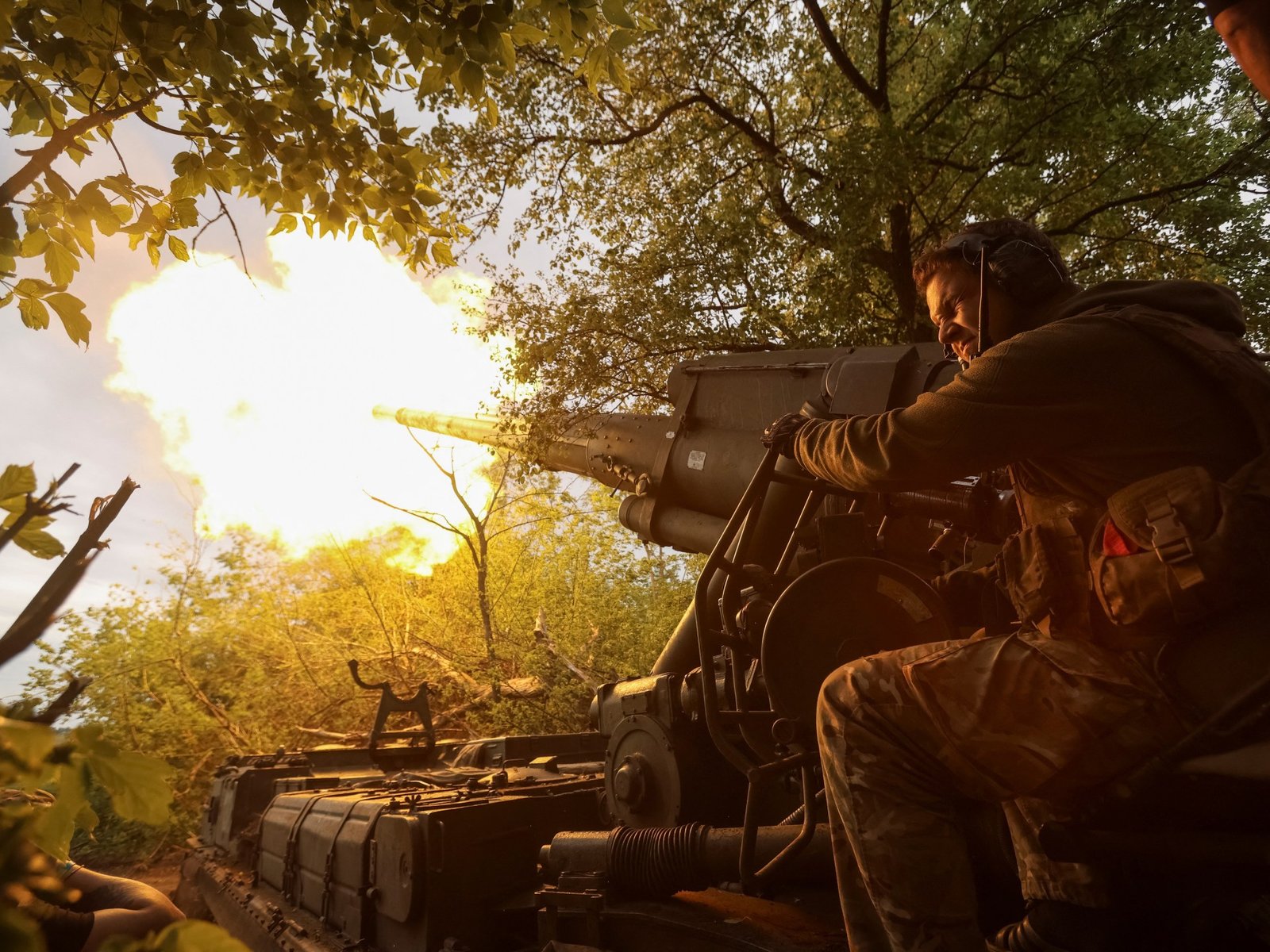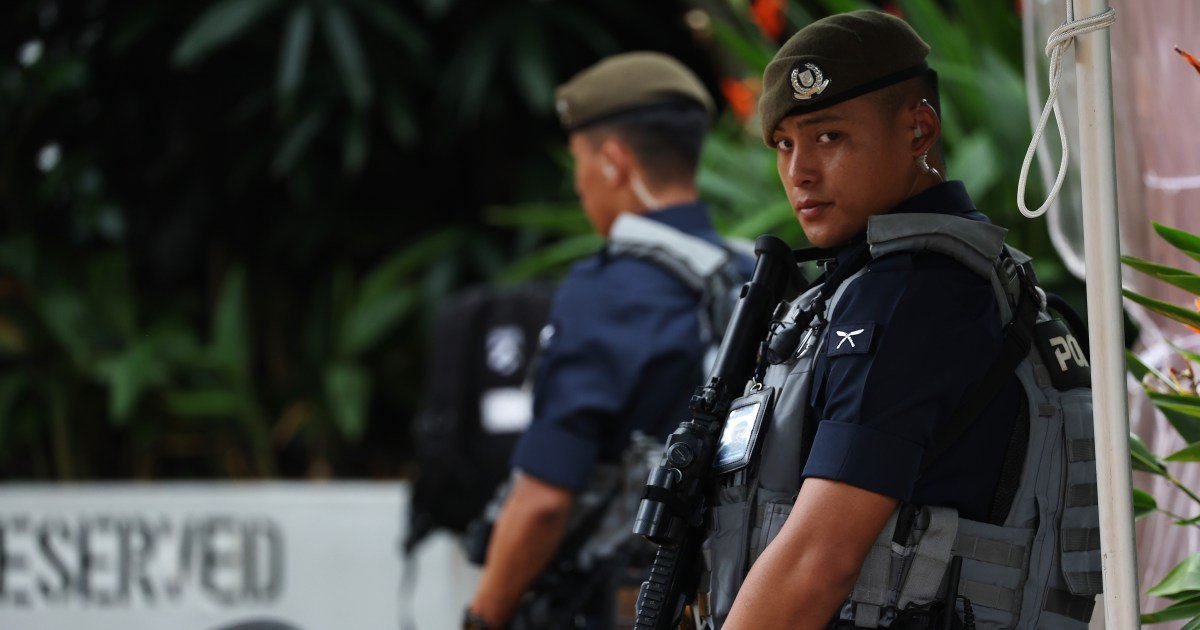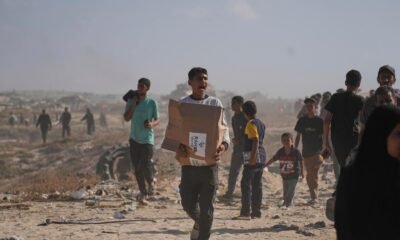Conflict Zones
Gaza’s stolen childhood: The thousands of children Israel killed | Israel-Palestine conflict News
Israel kills a child in Gaza every 45 minutes.
That is an average of 30 children killed every day over the past 535 days.
Since October 7, 2023, Israel has killed at least 17,400 children, including 15,600 who have been identified. Many more remain buried under the rubble, most presumed dead.
Many of the surviving children have endured the trauma of multiple wars, and all of them have spent their lives under the oppressive shadow of an Israeli blockade, affecting every aspect of their existence from birth.
What is left of Gaza’s children?
About half of Gaza’s 2.3 million residents are children.
Over the past 17 months, Israeli attacks have left their homes in ruins, destroyed their schools, and overwhelmed their healthcare facilities.
To put this in perspective, if you had a room of 100 children:
2 have been killed
2 are missing, presumed dead
3 have been wounded, many critically
5 have been orphaned or separated from their parents
5 require treatment for acute malnutrition
The rest of the children bear the invisible scars of war, trauma that affects their mental health, safety and future.

Who were these children Israel killed?
They were the sons and daughters of Gaza, each with a life that should have been filled with innocence and the joy of childhood.
Among the documented children killed, there were –
at least 825 babies, not yet old enough to celebrate their first birthday
895 one-year-olds, killed before they could take their first steps
3,266 who died as preschoolers aged two to five, deprived of play, discovery and the simple wonders of growing up
4,032 who died aged six to 10, leaving behind empty classrooms and school uniforms that were hardly worn
3,646 who died aged 11 to 14, middle schoolers who had lived through three wars (2012, 2014, 2021), but were killed in the fourth
and 2,949 who were 15 to 17, at the age when they were preparing to step into the world, leaving behind dreams of independence and futures never realised; the 17-year-olds lived through four wars (2008-09, 2012, 2014, 2021), and were killed in the fifth
8,899 who were sons and 6,714 were daughters

1,720 killed before their first steps


On March 18, Israeli forces launched 100 simultaneous strikes across the Gaza Strip, shattering a two-month-old ceasefire with Hamas.
Over the next 36 hours, 436 people were killed, including at least 183 children, 94 women, 34 elderly people, and 125 men.
Among the children killed was one-year-old Mohammed Abu Hilal, who died along with his seven-month-pregnant mother, Afnan, in an Israeli air attack on the al-Mawasi camp – a location Israel had claimed was a “safe zone”. His father Alaa had sent them there in the hope of keeping them safe.
“Oh, my dear son, go up to heaven, you’re going to find all your toys up there,” the heartbroken father cried as he held his son’s lifeless body.
Mohammed was among 895 one-year-olds – and 935 children named Mohammed – killed by Israeli attacks.
3,266 deprived of the joys of play


Reem was just three years old when she was killed, alongside her five-year-old brother Tarek, in an Israeli air attack on their family home in the Nuseirat refugee camp in November 2023.
Following her death, a video of her grandfather, Khaled Nabhan, cradling her lifeless body and calling her “Soul of my soul” spread widely, symbolising the immense suffering endured by Gaza’s population.
Khaled cherished his beloved granddaughter and recalled sadly how she would greet him with a hug every day.
On December 16, 2024, Khaled, who dedicated his time to helping those in need, was also killed by an Israeli strike.
4,032 leaving empty classrooms


Hind Rajab, five, was a bright, kind-hearted child full of life and curiosity, her family and neighbours said.
On January 29, 2024, Hind found herself the only survivor in a blood-soaked car filled with the bodies of her family.
They had been targeted by an Israeli tank as they tried to flee Israeli bombardment on Tal al-Hawa neighbourhood. Hind was left alone but managed to call the Palestine Red Crescent Society (PRCS).
In her final moments, she pleaded for help over the phone, her terrified cries echoing across the world.
“I’m so scared, please come. Please send someone to take me,” she repeated during a harrowing three-hour conversation with emergency services that Israel was blocking from reaching her.
Her body was discovered 12 days later alongside those of her family and the medics who had attempted to save her.
The Hind Rajab Foundation continues to honour her memory and seek justice for her and others affected by Israel’s war on Gaza.
3,646 killed before they could grow up


On October 19, 2023, an Israeli air strike struck Gaza’s oldest church, Saint Porphyrius, killing at least 18 people.
Among those killed were siblings, Suhail Ramez al-Souri (14), Julie Ramez al-Souri (12) and Majd Ramez al-Souri (10).
Their heartbroken father recounted the devastating moment his children were killed while seeking refuge inside the church.
“We thought this was our safe haven,” he said through tears, “Our last refuge, in the house of God.”
“They bombed my angels without warning. They killed our children, the children of cousins, relatives,” the grieving father added.
2,949 futures never realised


Mahmoud wanted to be a journalist, just like his father.
Determined to share the stories of his homeland with the world, the 15-year-old, known as “young Wael”, together with his sister Khuloud, started recording videos documenting the effects of Israel’s escalating violence on Gaza.
“In Gaza, there is no place safe … this is the [fiercest] and most violent war we have lived [through] in Gaza. Help us to stay alive,” the young Dahdouh duo pleaded.
On the night of October 25, 2023, Mahmoud was killed, along with his mother, seven-year-old sister Sham, one-and-a-half-year-old nephew Adam and 21 others, in an Israeli air raid on the Nuseirat camp where the family had sought shelter after being told by the Israeli army to move south for their safety.
The stories of children like Mohammed, Reem, Hind, the al-Souri siblings, and Mahmoud reflect the countless childhoods stolen in Gaza, leaving behind memories of innocence and futures that will never be realised.
Conflict Zones
Sudan Paramilitary Claims Key Gains in Kordofan; Fighting Intensifies Near Khartoum

Khartoum, May 30, 2025 — Rapid Support Forces (RSF) deputy leader Abdel Rahim Daglo announced on Friday that RSF fighters would press their eastward advance toward Khartoum, claiming “great victories” in several strategic towns across Kordofan. Addressing troops at an undisclosed location, Daglo said that all armed groups within the Tasis coalition had joined his paramilitary ranks and were now operating in concert with the RSF.
According to Daglo, RSF units seized control of Al-Dubaibat and Al-Hammadi in South Kordofan state, as well as Al-Khawi in neighboring West Kordofan. “Our fighters have secured these areas after intense clashes with Sudanese Armed Forces (SAF) units and allied militias,” Daglo declared, adding that the momentum would not wane until the capital was within reach.
Sudan’s army, however, downplayed recent RSF advances as part of a “reorganization” campaign. A senior ally of the SAF—also the governor of Darfur—insisted that the military was regrouping and fortified its positions to counter what he described as “a temporary setback.” He maintained that the SAF’s strategic reserves remained intact and that front-line forces were being repositioned to mount a sustained defense of Khartoum.
As fighting has spread northward, the humanitarian situation in Khartoum has deteriorated sharply. With basic services all but collapsed, a deadly cholera outbreak has emerged in the densely populated capital. Aid agencies warn that the impending rainy season could exacerbate sanitation challenges, fueling further disease transmission. The United Nations has labeled the crisis “the world’s worst humanitarian emergency,” citing over 25,000 confirmed deaths and more than 3 million internally displaced persons since April.
International pressure has also mounted on Sudan’s transitional government. In late May, Washington imposed sanctions on Sudanese military leaders for the “alleged use of chemical weapons” against civilians. In response, the government announced a national investigation into the claims—a move it said was aimed at preserving Sudan’s international standing amid intensifying conflict.
With both sides entrenching their positions around Khartoum, observers warn that a protracted stalemate could unleash further civilian suffering. The RSF’s pledge to advance eastward has raised concerns that front-line engagements may spill into densely populated suburbs, where millions have already endured weeks of intermittent shelling and aerial bombardments. For now, the fate of Khartoum—and the broader prospects for peace—remain uncertain as paramilitary and army forces brace for a decisive showdown.
Conflict Zones
Two killed in Russian attacks on Ukraine before possible talks in Turkiye | Russia-Ukraine war News

Russia has confirmed it will send a delegation to Istanbul, but Kyiv has not yet accepted the proposal.
Russian drone and missile attacks on Ukraine have killed at least two people, according to officials, as Ukraine ordered the evacuation of 11 more villages in its Sumy region bordering Russia.
Russian troops launched an estimated 109 drones and five missiles across Ukraine on Friday and overnight, the Ukrainian air force said on Saturday, adding that three of the missiles and 42 drones were destroyed and another 30 drones failed to reach their targets without causing damage.
The attacks came amid uncertainty over whether Kyiv will take part in a new round of peace talks early next week in Istanbul.
In the Russian attacks on Saturday, a child was killed in a strike on the front-line village of Dolynka in the Zaporizhia region, and another was injured, Zaporizhia’s Governor Ivan Fedorov said.
“One house was destroyed. The shockwave from the blast also damaged several other houses, cars, and outbuildings,” Fedorov wrote on Telegram.
A man was also killed by Russian shelling in Ukraine’s Kherson region, Governor Oleksandr Prokudin wrote on Telegram.
Moscow did not comment on either attack.
Meanwhile, authorities in Ukraine’s Sumy region said they were evacuating 11 villages within a roughly 30-kilometre (19-mile) range from the Russian border.
“The decision was made in view of the constant threat to civilian life as a result of shelling of border communities,” the regional administration said on social media.
Ukrainian President Volodymyr Zelenskyy has said some 50,000 Russian troops have amassed in the area with the intention of launching an offensive to carve out a buffer zone inside Ukrainian territory.
Ukraine’s top army chief, Oleksandr Syrskii, said on Saturday that Russian forces were focusing their main offensive efforts on Pokrovsk, Torets and Lyman in the Donetsk region, as well as the Sumy border area.
Syrskii added that Ukrainian forces are still holding territory in Russia’s Kursk region – a statement Moscow has repeatedly denied.
The evacuations and attacks came just two days before a possible meeting between Kyiv and Moscow in Istanbul, as Washington called on both countries to end the three-year war.
Russia has confirmed it will send a delegation, but Kyiv has not yet accepted the proposal, warning the talks would not yield results unless the Kremlin provided its peace terms in advance.
Zelenskyy said Saturday it was still not clear what Moscow was planning to achieve at the meeting and that so far, it did not “look very serious”.
Conflict Zones
Hegseth warns of China threat as Beijing’s top brass skip Singapore summit | Military News

Singapore – Of the many military officials darting across the lobby of Singapore’s Shangri-La Hotel this weekend, there has been one significant absence.
China’s Defence Minister Dong Jun skipped the annual Shangri-La Dialogue, Asia’s premier security forum, with Beijing sending a delegation of lower-ranking representatives instead.
It was the first time since 2019 that China has not dispatched its defence minister to the high-level dialogue on regional defence, except when the event was cancelled in 2020 and 2021 due to the COVID-19 pandemic.
Beijing’s decision raised eyebrows in Singapore, coming at a time of heightened tensions between China and the United States – the world’s two biggest superpowers.
Dong’s absence meant there was no face-to-face meeting with his US counterpart, Secretary of Defence Pete Hegseth, who had the floor to himself on Saturday when he told the defence forum that the military threat posed by China was potentially imminent.
“It has to be clear to all that Beijing is credibly preparing to potentially use military force to alter the balance of power in the Indo-Pacific,” Hegseth told delegates in Singapore.
Pointing to China’s regular military drills around Taiwan as well as increasingly frequent skirmishes in the South China Sea, Hegseth said Beijing was proactively harassing its neighbours.
“There’s no reason to sugar-coat it. The threat China poses is real, and it could be imminent,” Hegseth said.
He also pointed to China’s growing military assertiveness as a reason for Asian nations to boost their defence spending, pointing to Germany, which has pledged to move towards spending 5 percent of its gross domestic product (GDP) on defence.
“It doesn’t make sense for countries in Europe to do that while key allies in Asia spend less on defence in the face of an even more formidable threat,” Hegseth said.
The defence chief also looked to reassure Asian allies that Washington was committed to Asia Pacific security despite strained ties in recent months as US President Donald Trump targeted some close allies with hefty trade tariffs.
“America is proud to be back in the Indo-Pacific, and we’re here to stay,” he said, opening his speech.
Some analysts were quick to play down the severity of Hegseth’s warnings about China.
“Short of a very few countries, not many in this part of the world see China as an imminent threat and would up their [defence] spending,” said Dylan Loh, assistant professor in the public policy and global affairs programme at Singapore’s Nanyang Technological University.
China tight-lipped on defence chief’s absence
In previous years, the Shangri-La Dialogue had provided a rare platform for meetings between Chinese and US officials in the more informal surroundings that the summit could offer.
The structure of the schedule also allowed Beijing’s military chiefs to directly respond to the keynote speech from the US defence secretary and to present their narrative to other members of the Asia Pacific.
Beijing has remained tight-lipped on the reason for Defence Minister Dong’s absence from the forum, fuelling an information void that has been filled by speculation.
One theory is that China did not want to send a high-profile delegate to the event at such a sensitive time as Beijing navigates the tariff war with the Trump administration.
“Any sort of faux pas or comments that may go off script can be picked up and picked apart or misconstrued,” said Loh, of Singapore’s Nanyang Technological University.
“So the question is why take the risk when US-China relations are at a very delicate point at this moment,” Loh told Al Jazeera.

The Shangri-La Dialogue weekend has not always been the easiest occasion for Chinese defence ministers. In recent years, they have faced difficult questions from their counterparts in other countries, who are unhappy with Beijing’s increasing assertiveness in the Asia Pacific region.
Loh said this could be another factor in Dong’s absence from the high-profile event.
“Any Chinese defence minister coming to Singapore now will be exposing himself and the country to political risk,” he said. “Themes like the South China Sea and possibly Taiwan will emerge, which makes China a convenient target,” Loh added.
Dong was appointed as China’s defence minister in late 2023, after his predecessor, Li Shangfu, was removed from office.
Less than a year into the job, there was speculation surrounding Dong’s new position following media reports that he was under investigation as part of a wider investigation into corruption in the Chinese military. Beijing denied the reports, with the minister continuing to maintain a public profile despite the allegations.
There has also been intense scrutiny of China’s military, following reports of an apparent purge of top-level officials by President Xi Jinping.
One of Beijing’s most senior generals, He Weidong, was missing from a high-profile political meeting in April, adding to rumours surrounding a possible restructuring in the People’s Liberation Army (PLA).
Ian Chong, a nonresident scholar at the Carnegie China research centre, said such speculation could be a factor in Dong’s no-show in Singapore.
“Because of the domestic turmoil with China’s senior military, they perhaps don’t want to, or the PLA itself feels that it’s not in a position to send somebody senior,” Chong told Al Jazeera.
Announcing Dong’s absence at a news conference before the summit, Chinese military spokesperson Senior Colonel Zhang Xiaogang maintained that communication channels were still open between defence officials in Washington and Beijing.
“China places great importance on US-China military ties, and is open to communication at different levels,” Zhang said.
-

 Africa4 days ago
Africa4 days agoSurvivor of Liverpool car ramming talks of shock and panic
-

 Sports3 days ago
Sports3 days agoThe Knicks are bringing hope and title dreams back to New York after years in the doldrums
-

 Lifestyle3 days ago
Lifestyle3 days agoChildren and careers: Talking to kids about what they want to be when they grow up
-

 Lifestyle4 days ago
Lifestyle4 days agoHow to decorate a patio, balcony or other small outdoor space
-

 Lifestyle3 days ago
Lifestyle3 days agoFaizan Zaki hopes to go from spelling bee runner-up to champ
-

 Middle East4 days ago
Middle East4 days agoHajj pilgrimage in Saudi Arabia to begin on June 4 | Religion News
-

 Middle East4 days ago
Middle East4 days agoGaza’s aid system isn’t broken. It’s working exactly as designed | Humanitarian Crises
-

 Europe5 days ago
Europe5 days agoMacron’s marital shove disappears from French airwaves




